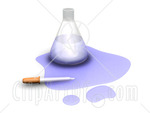
usalawyerstoday.com
Wondering where we’ve been for the past month?
My summer was spent thinking and writing about technology – all sorts of technology. It got me thinking about how technology has changed our lives and how it is poised to change all aspects of the law. Let me share with you my summer projects, which go well beyond nanotechnology issues. I hope it will enable me to put the legal issues of nanotechnology in a broader context going forward.
1. Neuroscience and Tort Law. I and my co-author (and co-blogger) Eric Laury embarked upon a project more than a year ago to examine how the so-called “new neuroscience” will impact tort law. By “new neuroscience” we mean mostly functional neuroimaging (fMRI and SPECT), but also any other neuroscientific methods to examine the human brain, including brain wave technology. Our approach to this extensive law review article was both doctrinal (i.e. how the new neuroscience will eventually change the rules of tort doctrine) and practical (i.e. the problems of incorporating it in tort litigation, particularly under the rules of evidence). We spent a lot of time predicting the effect that the new neuroscience will eventually have in the courtroom. Professor Stephen Morse at UPenn Law School has pointed out that much of what we currently know as legal doctrine is based upon “folk psychology” – that is, what we believe causes people to act the way they do. The new neuroscience will eventually change the law by changing our understanding of human behavior.
2. Cell Phones. I also found myself writing a piece on cell phones and product liability. In particular, I looked at whether actions claiming the telecommunications industry should be marketing cell phones with headsets to protect against the hazards of radio frequency (“RF”) emissions should be allowed, or whether they are preempted by regulations granting the FCC the authority to set radiation standards for cell phones. The question, it turns out, it much more complicated than one might think and involves several federal statutes and regulations, including the two major statutes governing the wireless networks in this country. The Supreme Court will consider a petition for certiorari in Farina v. Nokia, 625 F.3d 97 (3d Cir. 2010), early in the new term. Even if cert is not granted, this topic likely will continue to make waves in the courts. My article appears on the BNA subscription service at 39 Prod. Safety & Liab. Rep. (BNA) 871 (Aug. 5, 2011) and 26 Toxics L. Rep. (BNA) 949 (Aug. 10, 2011). It also appears in U.S. Law Week at 80 U.S.L.W. 321 (Sept. 13, 2011).
3. Nanotechnology and the Environment. I also wrote a short article to be published in the “Insight” section of the upcoming Natural Resources & Environment journal, which is the journal of the ABA Environmental Law Section. My goal was to alert attorneys to some of the regulatory initiatives either in the works or in the pipeline. The piece focuses on TSCA, FIFRA, OSHA, and foreign initiatives (EU, Australia). It was interesting to look at the impact of nanomaterials exclusively from the environmental (outdoors and indoors) perspective.
So while I may not have been spending a lot of time blogging about nanotechnology and the law, I was busy getting the bigger picture on technology.
 In my previous post, I indicated that I would be moving on to discuss the relevancy arm of the Daubert admissibility test. It turns out I have a few more thoughts about the reliability arm.
In my previous post, I indicated that I would be moving on to discuss the relevancy arm of the Daubert admissibility test. It turns out I have a few more thoughts about the reliability arm. This post continues the discussions in earlier posts about evidentiary
This post continues the discussions in earlier posts about evidentiary  My
My 